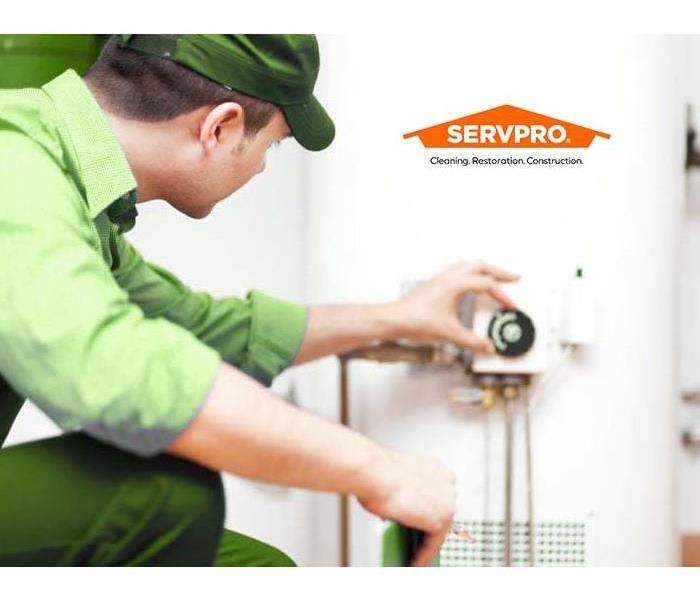Water Heater Maintenance
12/14/2021 (Permalink)
This season, in our community, water damage has been caused most commonly by water heaters. Did you know that water heaters are a plumbing fixture that may need regular maintenance? Meaning, not only can you extend the life of the heater, but also help prevent it from causing damage in your house. Here are some steps on how to take care of your water heater. If you don’t feel comfortable doing this yourself, you can always call a professional. Visit Alexandria’s Chamber of Commerce or the National Home Builders Association of Central Louisiana website to find a local plumber.
- Test the TPR valve
- Shut off the power and the cold-water supply valve.
- Place a bucket under the pipe connected to the temperature-pressure-release (TPR) valve on the top or side of the tank. (This valve opens if the tank pressure gets too high.)
- Lift the valve's tab to let some water out, then let go. If water keeps flowing, drain the tank partway, unscrew the old valve with a pipe wrench, and install a new one.
- Check the Anode rod
- Put a hose to the tank's drain cock and let out a few gallons of water.
- Now fit a 1 1/16-inch socket onto the rod's hex head on top of the heater (or under its top plate) and unscrew the rod. If it's less than ½ inch thick or coated with calcium, buy a new one, wrap its threads with Teflon tape, put it back in the tank, and tighten securely. Use this segmented rod if headroom above the tank is limited.
- Drain the tank and wash out sediment
- Drain the remaining water in the tank into the bucket, then stir up the sediment on the tank's bottom by briefly opening the cold-water supply valve. Drain and repeat until clean water comes out of the hose.
- Close the drain cock, refill the tank, and turn its power back on.
- Adjust the temperature
- Find the temperature dial on the side of the tank and unscrew its cover. Adjust the dial to 120 degrees using a flathead screwdriver. For every 10 degrees the temperature is lowered, you can expect to save up to 5 percent in energy costs.
- Turn the water heater off or the thermostat down to its lowest setting if you plan to be away from home for more than three days.
- Insulate the pipes
- Buy some self-sticking 3/8-inch-thick foam pipe insulation that matches the pipes' diameter.
- Slide the foam over the hot-and cold-water pipes as far as you can reach. Insulating the cold-water pipe prevents condensation in summer.
- Peel the tape and squeeze the insulation closed. If the pipe is 6 inches or less from the flue, cover it with 1-inch-thick unfaced fiberglass pipe wrap.
- Insulate the heater
- Cut the insulating blanket (shown: R-4.5 foil-covered bubble wrap) to fit around pipes, the TPR valve, and the temperature control sticking out of the tank.
- Wrap the side of the tank, and seal cuts with foil tape. Do not cover the tops of oil or gas heaters.
- Cap an electric heater with an oversize circle of insulation, and tape its edge securely to the side of the tank.
There are benefits to caring for your water heater. These are just some ways you can increase a water heater’s operating efficiency and longevity. Adding insulation and setting the temperature have to be only done once. Flushing the tank and checking the anode rod should be done once a year. Insulation reduces heat loss by 45% and lowers as much as 9% of costs. A viable anode rod in the tank will help prevent the inside from rusting.
Feel free to reach out to SERVPRO of Alexandria for questions or concerns regarding water related issues in your home or business.
#waterDamage #insulation #floodDamage #plumbing #centralLouisiana #hereToHelp #heroReady






 24/7 Emergency Service
24/7 Emergency Service
